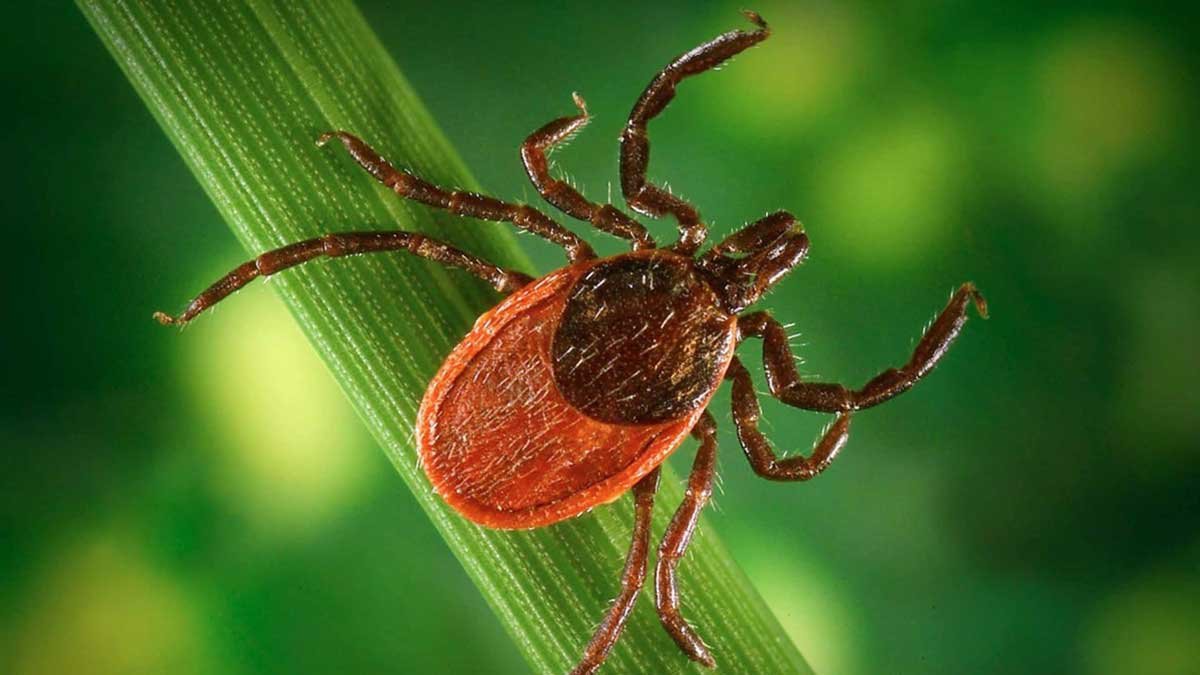Avid hikers know that the beauty of nature is not without her dangers. When you embark on an adventure, it is essential to know these risks and take precautions.
One large risk is the very small tick. There are many species all across the country, and you’re likely to meet one at some point. That’s why you should know the common species and follow best practices for preventing a bite.
What is a Tick?
A tick is a tiny parasite, usually three to five millimeters long, that feeds on the blood of other creatures. They are arachnids, like spiders, and these miniature vampires live all over the world. There are seven species hikers should know that live in the United States, bite humans, and transmit diseases.

Common Species and Associated Diseases
The Brown Dog Tick is the most well-known species, found throughout the continental U.S. Though they mostly bite dogs, they can bite humans. These nasty critters transmit Rocky Mountain Spotted Fever (RMSF), which can cause fever, headache, rash, and even death if not treated early with proper antibiotics.
Western United States Ticks
The Rocky Mountain Wood Tick lives in Rocky Mountain states and Southwestern Canada. This tick transmits Rocky Mountain Spotted Fever, tularemia, and Colorado Tick Fever, a viral disease causing fever, aches, and more. There’s no treatment, but luckily serious illness and death are rare. Tularemia often causes fever and small ulcers at the bite location. Most people recover fully with antibiotics, and life-threatening symptoms are rare.
The Western Blacklegged Tick lives along the Pacific Coast, mostly in Northern California. Because these ticks usually bite small animals, infection rates in humans are just 1%. They transmit Lyme disease and Anaplasmosis, which causes standard fever/achy symptoms. It can also cause organ failure if not caught, but it’s treatable with antibiotics.
Lyme disease is the most common infection transmitted by ticks. It causes fever, headache, fatigue, and skin rashes. If it is caught early enough, it can be treated with antibiotics, and patients recover quickly and completely. Without treatment, it spreads to the nervous symptom, causing arthritis, nerve pain, heart palpitations, and more.
Eastern United States Ticks
The American Dog Tick is mostly in the Eastern U.S., although it is also found along California’s coast. This tick transmits RMSF and tularemia. The Gulf Coast Tick lives along the Gulf and southern Atlantic coasts and transmits Rickettsiosis, which is a form of RMSF.
In the southeastern U.S, the aggressive Lone Star Tick transmits ehrlichiosis, Heartland virus, tularemia, and STARI, which causes a rash similar to Lyme disease. Ehrlichiosis causes the standard fever/achy symptoms and is treated with antibiotics. Heartland virus causes similar symptoms, and though there’s no treatment, most patients recover fully.
The Blacklegged Tick is abundant across the Eastern U.S. and transmits Lyme Disease, anaplasmosis, ehrlichiosis, babesiosis, and Powassan virus disease.
Many Babesiosis patients don’t exhibit symptoms, but for those with flu-like symptoms, antibiotics will treat it. Powassan virus disease is luckily rare since it kills 10% of patients and causes life-long headaches and memory problems in half of all survivors.
How to Avoid Ticks
As a hiker, you probably pass through tick-infested areas occasionally. When you hike, it’s important to stay vigilant to reduce your risk of a bite. First, do a little research about the area you are visiting as well as the weather to know if ticks are likely to appear. Below are a few more important precautions to prevent tick bites.
Avoid Walking in Long Grass
As beautiful as it is, long grass is unfortunately not a safe place to frolic. Ticks love to hide in tall grass and dense underbrush to give them better access to passing prey, like you! Stay in the center of the trail, and don’t set your tent on the edge of your campsite.
Wear Light-Colored Clothing
Since most ticks are darker browns and reds, you should wear light colors when you hike. This way, if a tick is crawling on your clothes, you’ll be able to see it easily. Also, wear long-sleeves to keep a barrier between ticks and your skin. If it’s hot out, go for a light layer that is breathable but still protective.

Tuck In Your Pants
One great technique hikers often use is to tuck their pants into tall socks or their hiking boots. Layering your clothing like this makes it hard for ticks to crawl up your pants and find your skin.
While this isn’t the most attractive look, no one will judge you for it. Fellow hikers know this common practice and may be reminded themselves to take similar precautions!
Use Tick Repellent
Tick repellent sprays and lotions provide an extra layer of defense against these pests. Bug sprays that have DEET, Eucalyptus oil, and other special chemical repel ticks and keep them from biting you. There is even tick-repellent clothing treated with the chemical that you can wear if you are willing to pay to reduce your risk.
Inspect Yourself Regularly
In a particularly tick-heavy area, plan to check yourself quickly every water break. Frequent inspections won’t give ticks the chance to get under your layers and decrease your chances of missing any hiders.
Ticks like to burrow into warm areas, like armpits, backs of knees, and groins. Upper thighs are also common since ticks crawl up the legs toward warmth. Also check your ears and belly button, as these little hideaways are favorites for ticks.
Finally, always check your hair! Ask your hiking partner to check your back and hair for an extra set of eyes to catch anything you can’t see or feel. Remember to give yourself a thorough inspection in the shower when you get home – within two hours of your hike, if possible.
How to Remove a Tick
If you do end up finding a tick, don’t panic! With regular inspections, the tick hopefully hasn’t had time to transmit any disease yet. You can buy dedicated tools for tick removal, but normal tweezers work as well.
Step One: Take a Picture
First things first, before you remove the tick, take a picture. If you end up seeking medical care, it’ll be helpful to show the doctor and maybe identify the tick. After the photo, wash your hands and prepare to remove the tick.
Step Two: Pull the Tick off with Tweezers
Use tweezers to grab hold of the tick as close to the skin as possible. Pull up in a steady motion with even pressure. Do not yank or twist the tick as you pull. This could cause the embedded legs or mouthpieces to break off and get stuck in your skin.
If this happens, you can leave it there. Just wash around the area, and keep an eye on it. As your skin heals, it’ll naturally push out like a splinter.
Step Three: Wash Up and Dispose of the Tick Safely
After removing the tick, wash your hands and the bite area with soap and water or rubbing alcohol. Dispose of the tick by wrapping it in tape, flushing it down the toilet, or putting it in alcohol. If you’re still on the trail, place it in a sealed container and pack it out.
Step Four: Keep an Eye on your Symptoms
Lastly, keep an eye on the bite area. It’s normal to have some red, inflamed skin, which should improve in a few days. If the red area gets larger, more painful, or itchier, call your doctor.
If you feel sick, develop a fever, hives, or other symptoms, go see your doctor! As noted above, ticks transmit many dangerous diseases. Most, however, can be treated easily if caught early enough.
What Not To Do
Maybe you’ve heard about people using nail polish or something similar to force the tick to release its bite. Don’t do this! You don’t want to give the tick more time to infect you with whatever diseases it may be carrying. Instead, use tweezers to remove it as soon as possible.
Finally, do not kill the tick by squishing it between your fingers. If the tick is filled with your blood, and worse – if it has a disease – you don’t want to splatter this infected blood everywhere. Leave the tick in one piece, and throw it in alcohol or down the toilet.
Final Thoughts
If you want to be in nature, there aren’t a lot of places you can avoid ticks altogether. Rather than give up the great outdoors, you can minimize your risk greatly by being informed and following these simple practices.
Wearing the right clothes, avoiding tall grassy areas, and inspecting yourself regularly will help keep you safe on the trail, so you can enjoy your next adventure and not come home with the wrong kind of souvenir!

